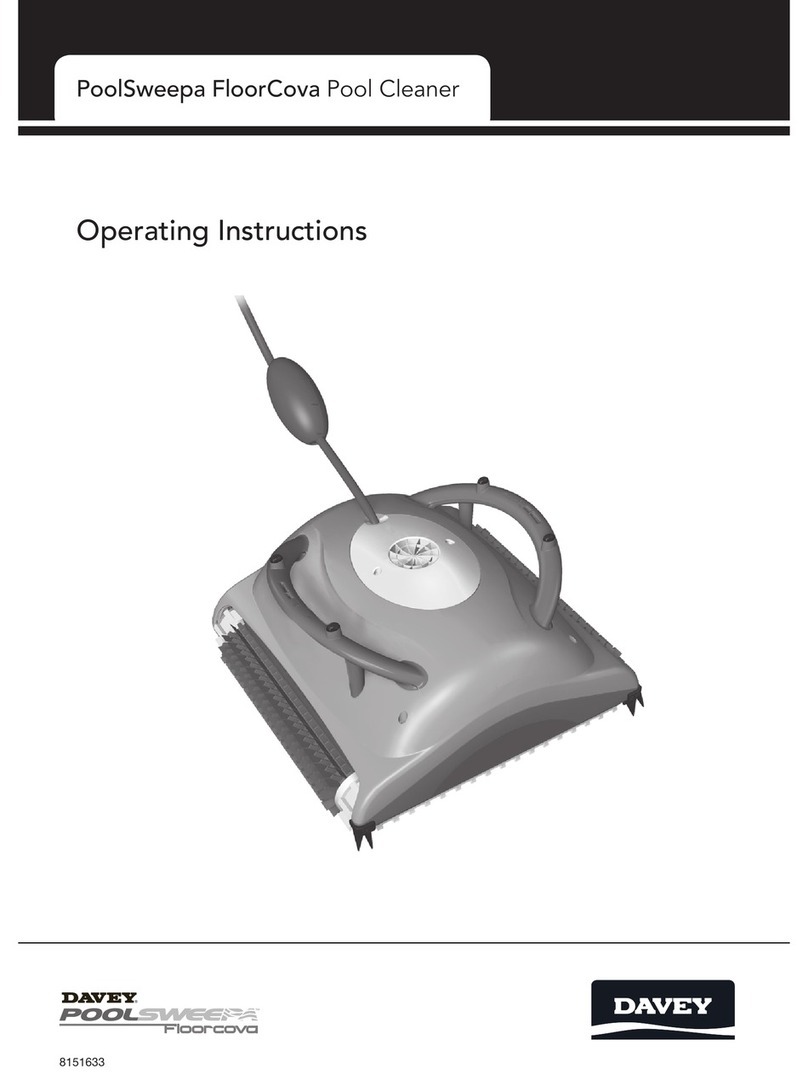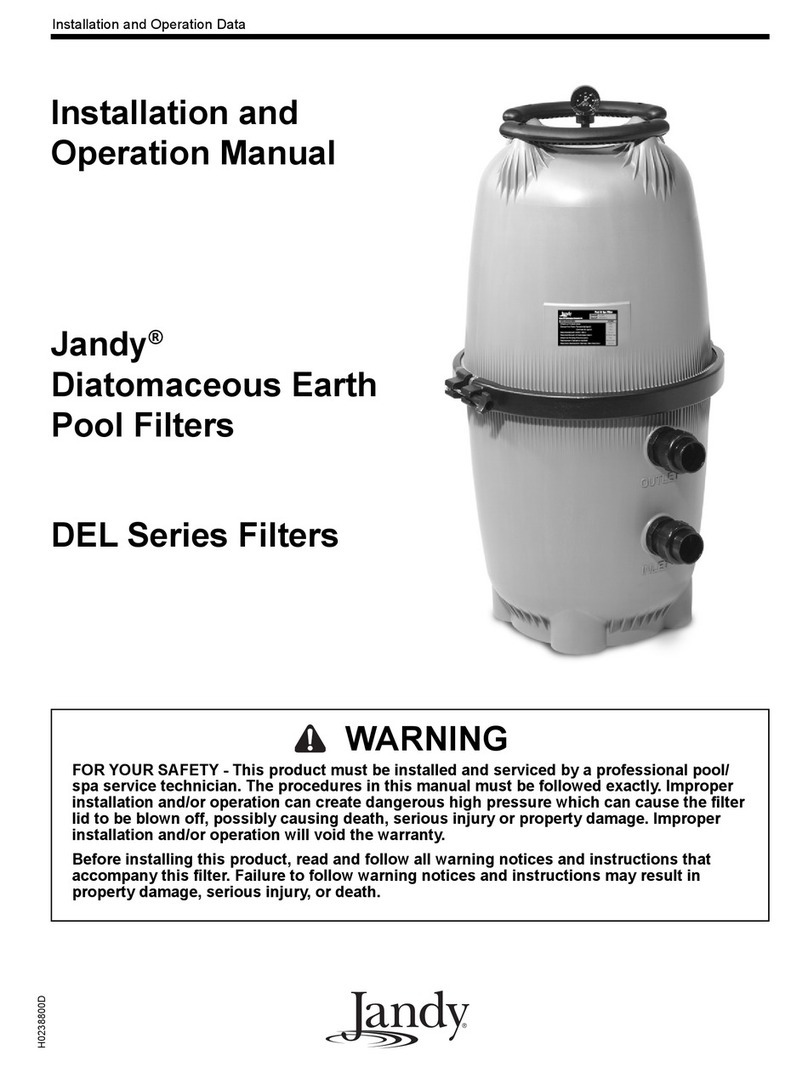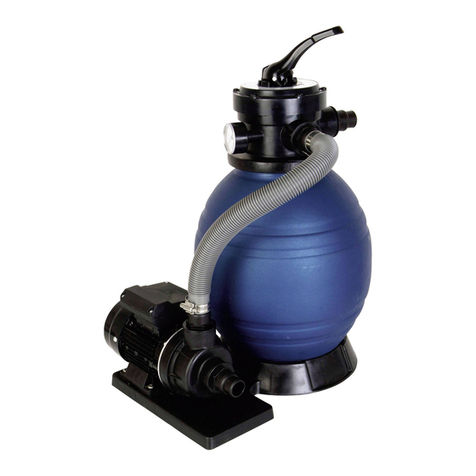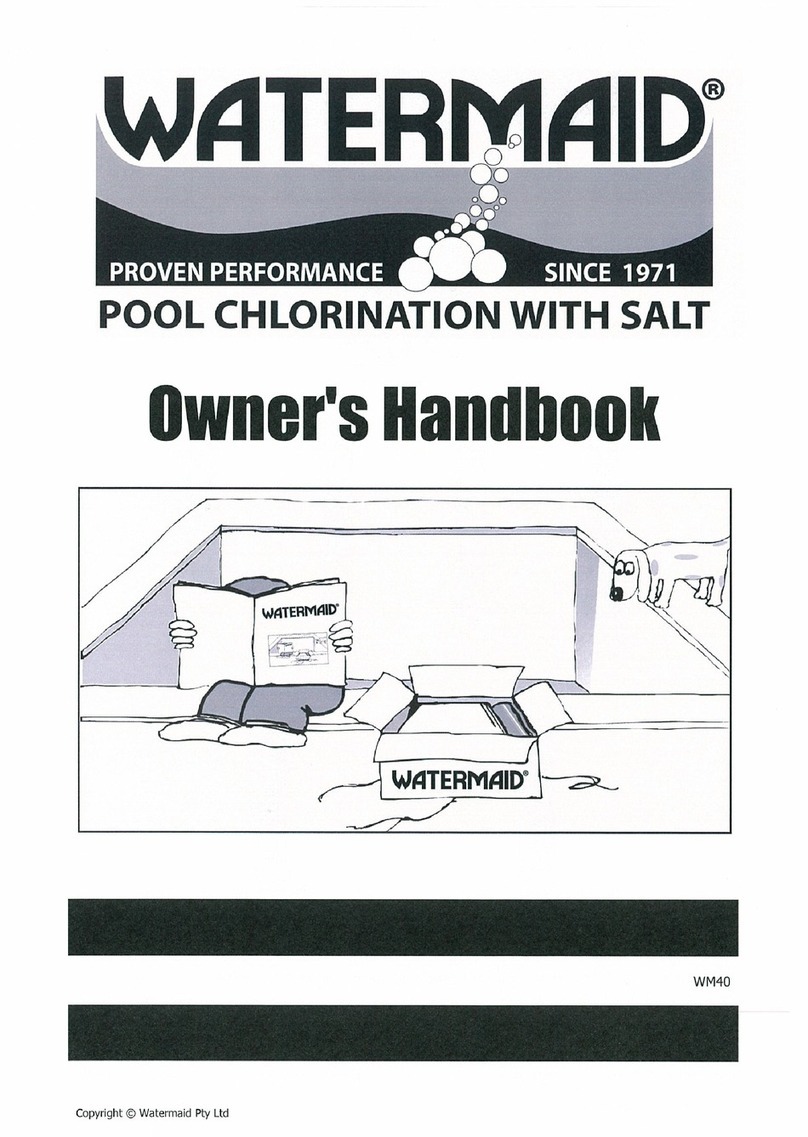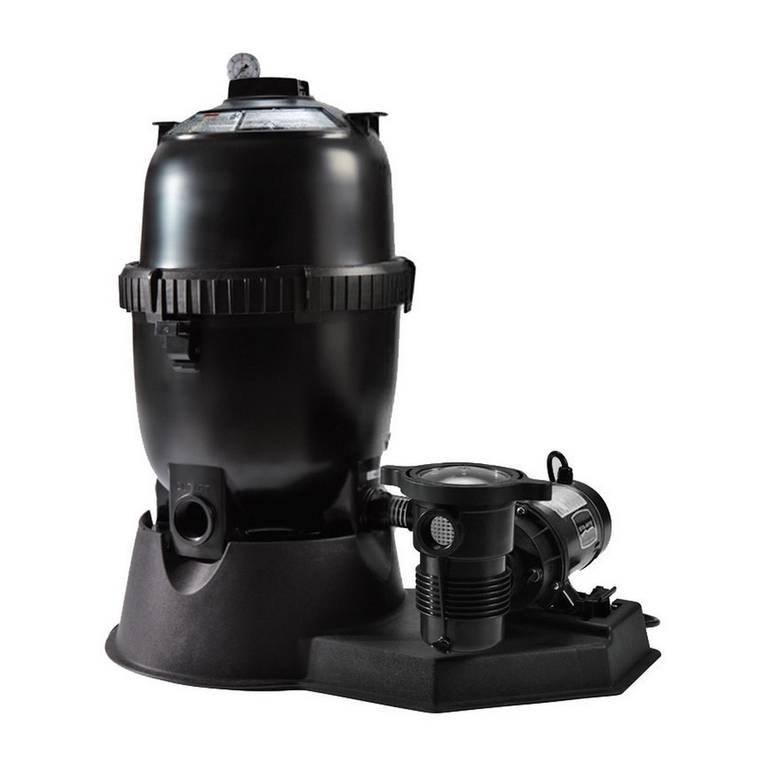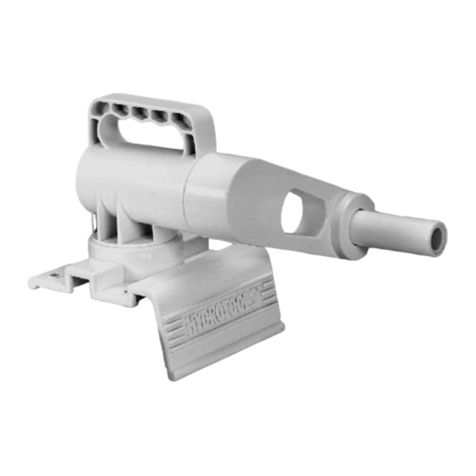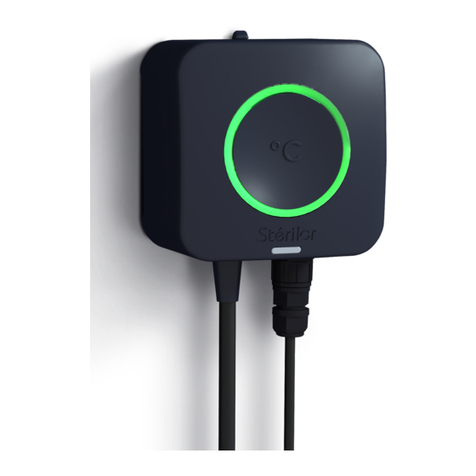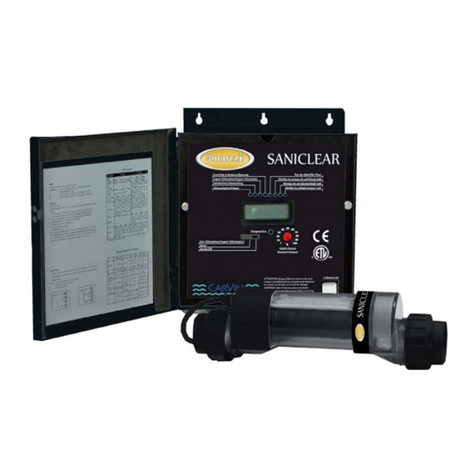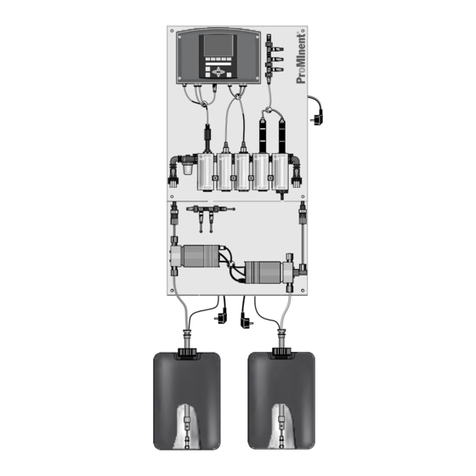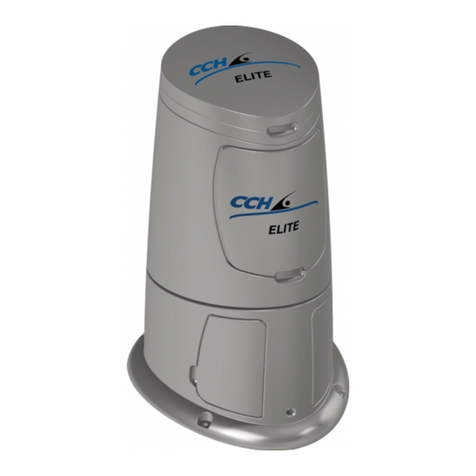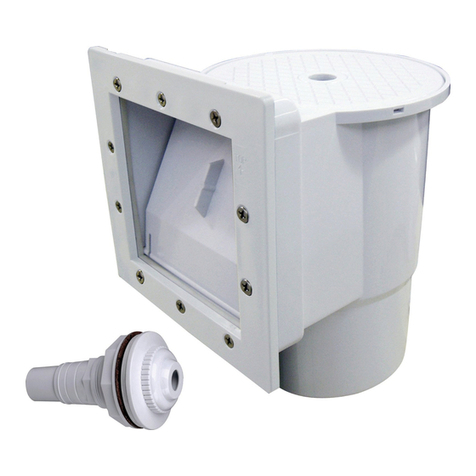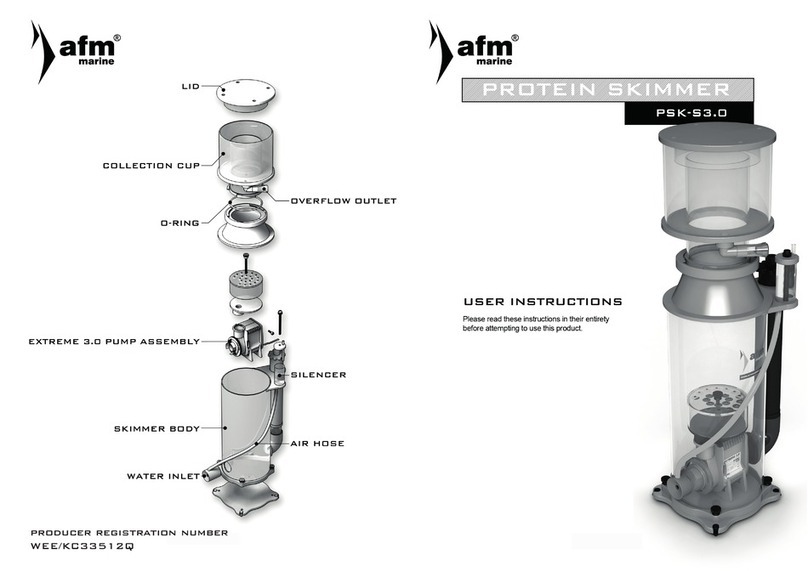
07
06
WARNING
A.Please do not use rock salt, its impurity may shorten the service life of the chlorinator.
B.Do not use Calcium Chloride as salt, only sodium chloride can be used.
C. Avoid using anti-blocking agent (sodium cyanide, aka YPS, is poisonous and corrosive)
salt, this kind of salt may change the color of the pool surface and the equipments inside.
D. Can use water treatment salt pills, but it make take very long to melt in the water.time
1.3Adding the right amount of salt
Most pools contains certain amount of salt, the concentration of the salt in water
will vary depending on the water source and the sterilizing agent used. Users can
use hand-held NaCl tester or salinity pen to test the current salt concentration of
the pool.
TIPS
♦ The operating salt concentration level of the salt chlorinator EC series is 3500ppm best
(3.5kg of salt per ).cubic meter
♦ When operating the salt chlorinator EC series for the first time. Add salt to the pool following
the steps below:A.Use a salinity meter to check the original salt concentration in the pool.
B.Add appropriate amount of salt , ensure that for each add 3.5kg of salt.cubic meter water
♦ The concentration of salt (ppm value) can be seen as the gram of salt within 1 ton of water. If the current
salt concentration of a 100 M3 pool is 850ppm (can be as 850g in 1 ton of water), how much taken
salt is needed for the chlorinator to normally operate ?
♦ Salt need to be added(unit: gram) = water in the pool x (normal operation salt concentration – the
current pool salt concentration) = 100 x (3500-850) = 265000 gram.
a.Turn on the circulation pump of the pool, and let the water circulation begin.
b.Turn off the salt chlorinator.
c.Test the current salt concentration of the pool
d.Calc ulate the amo u nt of s alt ne e ded to add to the poo l ac c o rdi n g t o th e
corresponding chart.
e.Add salt to the pool around the side of the pool, so that it can quickly and evenly
dilute into the water. Do not let salt accumulate on the bottom of the pool. Stir the
water on the bottom of the pool if needed so the salt can completely dissolve.
f.Run the circulation pump for 24 hours, so the salt can evenly distribute in the pool.
g.24 hours later, test the salt concentration of the pool again to see if it has reached
optimum level.
h.When the salt concentration of the pool has reached the desired level, turn on
the salt chlorinator and other equipments. Once the chlorinator initiates, please
set your desired level of chlorine production.
1.4 The correct way of adding salt
06
Water temperature
sensor malfunctioned
The input voltage is
too high or too low
♦ The malfunction must be
removed manually
♦ First check if the corresponding temperature
sensor is attached, if it is please replace the
sensor.
♦ Please change the hardware of the power supply.
The output current is
too large
Electrode malfunction
System storage chip
malfunction
The system detection
circuit malfunctioned
♦ First check if the electrode is attached. If it is,
please change the electrode.
♦ Please contact supplier for the repair or the
change of the system storage chip.
♦ Power off and reboot, if the error does not occur
again the chlorinator should turn on normally; if
this occurs multiple times, please contact supplier
for the repair or the change of the controller.
♦ Pl e a se c o nt ac t s up p li er fo r t he r e pa ir o r
replace.
The temperature sensor
inside the controller
malfunctioned
E6 ♦ Fi rst check if t he c o rrespond ing t emperatu re
sensor is attached, if it is please replace the sensor.
E7
E8 ♦ The malfunction must be
removed manually
♦ The malfunction must be
removed manually
♦ The malfunction must be
removed manually
♦ The malfunction must be
removed manually
♦ The malfunction must be
removed manually
EC
Eb
EA
E9
PRODUCT STRUCTURE
3 THE OPERATING CONDITION AND
MAINTENANCE OF THE SALT CHLORINATOR.
EXTRA
1.The mixture and maintenance of water and salt.
1.1 The cauculation of the amount of water:
Knowing the capacity of the pool is the first step in adding salt to the pool.
Rectangular pool: length (meter) x width(meter) x average depth (meter) = pool
water capacity ( )cubic meter
Circular pool: diameter(meter) x diameter(meter) x average depth(meter) x 0.785 =
pool water capacity ( )cubic meter
Ellipse pool: length (meter) x width(meter) x average depth(meter) x 0.893 = pool
water capacity ( )cubic meter
Beveledpool:x0.85=poolwatercapacity ( )poolvolume(cubicmeter)cubic meter
1.2The type of salt
The purer the sal t, the more t he ad v anta g e ous o f t h e salt chlorin ator would
operate. This will also extend the service life of the chlorinator. The Sodium Chloride
(NaCl) in the salt should be at least 99.6%. Best if the salt is dehydrated granular
food gradeseasalt.
♦ The malfunction must be
removed manually

